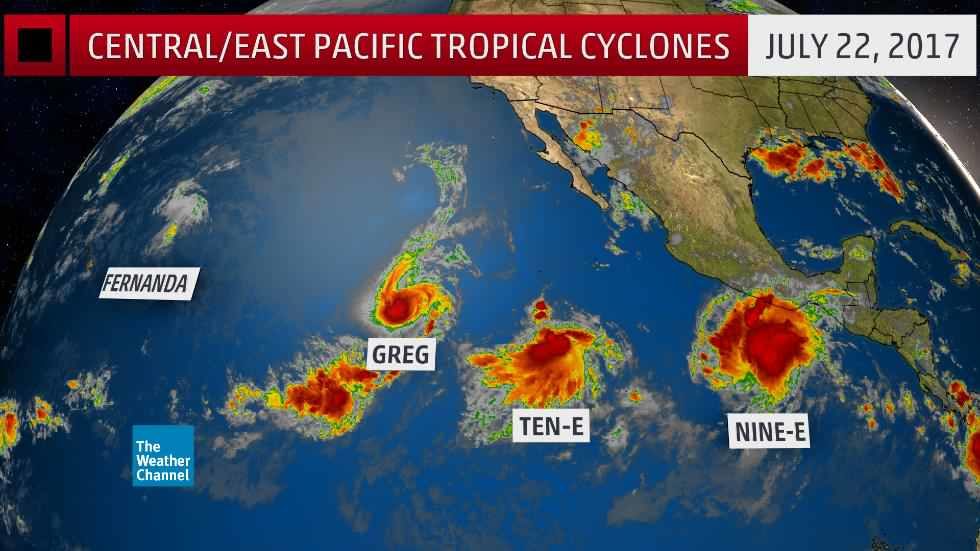
In the central and eastern Pacific Ocean on Saturday were two named storms, Fernanda and Greg, along with Tropical Depression Nine-E and Tropical Depression Ten-E. The two tropical depressions eventually went on to become Hilary and Irwin.
Meanwhile, the western Pacific Ocean had Noru, Kulap, Roke and Tropical Depression Eight-W all spinning in parts of that basin. Tropical Depression Eight-W would later become Tropical Storm Sonca.
Although it's not unheard of to see multiple tropical cyclones at the same time, this is impressive on any scale.
Eight tropical cyclones have not roamed the north Pacific Ocean simultaneously since 1974, according to Dr. Phil Klotzbach, a tropical scientist at Colorado State University.
The Pacific Ocean is a hot bed for multiple tropical cyclones to occur at the same time given its expansiveness.
On average, 36 tropical cyclones form each year in the northwestern Pacific and southwestern Pacific basins, combined. Another 16-17 form each year in the central and eastern north Pacific basin.
The majority of the eight tropical cyclones observed Saturday will never affect land directly. The exceptions are Roke, which brought heavy rain to southeast China, and Sonca which could soak China's Hainan Island.

There have been as many as five active Atlantic tropical cyclones at one time, from September 11-12, 1971. According to the National Hurricane Center, no more than two were of hurricane strength at any one time.
Four hurricanes have happened simultaneously twice in the Atlantic basin.
Most recently, this occurred September 25-27, 1998. Hurricane Georges was heading toward a Gulf Coast landfall while Hurricanes Ivan, Jeanne (not the Ivan and Jeanne you remember from 2004) and Karl meandered harmlessly in the central Atlantic Ocean.
On August 22, 1893, four hurricanes were also active in the Atlantic. One of these was the killer Sea Islands hurricane, which claimed between 1,000 and 2,000 lives in Georgia and South Carolina.
Why Did This Happen?
While the eastern North Pacific has been active throughout July, the western Pacific finally saw a boost in activity during recent days. A factor that helped play a role in that uptick in tropical cyclone activity in the western Pacific is the so-called MJO.
Areas near the equator don't get cold fronts. The only changeable weather over a relatively short period of time is a roughly 30-60 day wet/dry cycle triggered known as the Madden-Julian Oscillation. The MJO is essentially a wave of energy in the atmosphere that propagates eastward around the Earth near the equator once every 30-60 days.
By a "wave," we mean the MJO has a phase where upward motion in the atmosphere is strong, helping to boost the formation of clouds and thundershowers, and a suppressive phase, helping to squelch precipitation.
In this case, a strong MJO was supporting strong upward motion, clouds and thundershowers in the western Pacific Ocean, helping to spring that basin to life.



Reader Comments
to our Newsletter